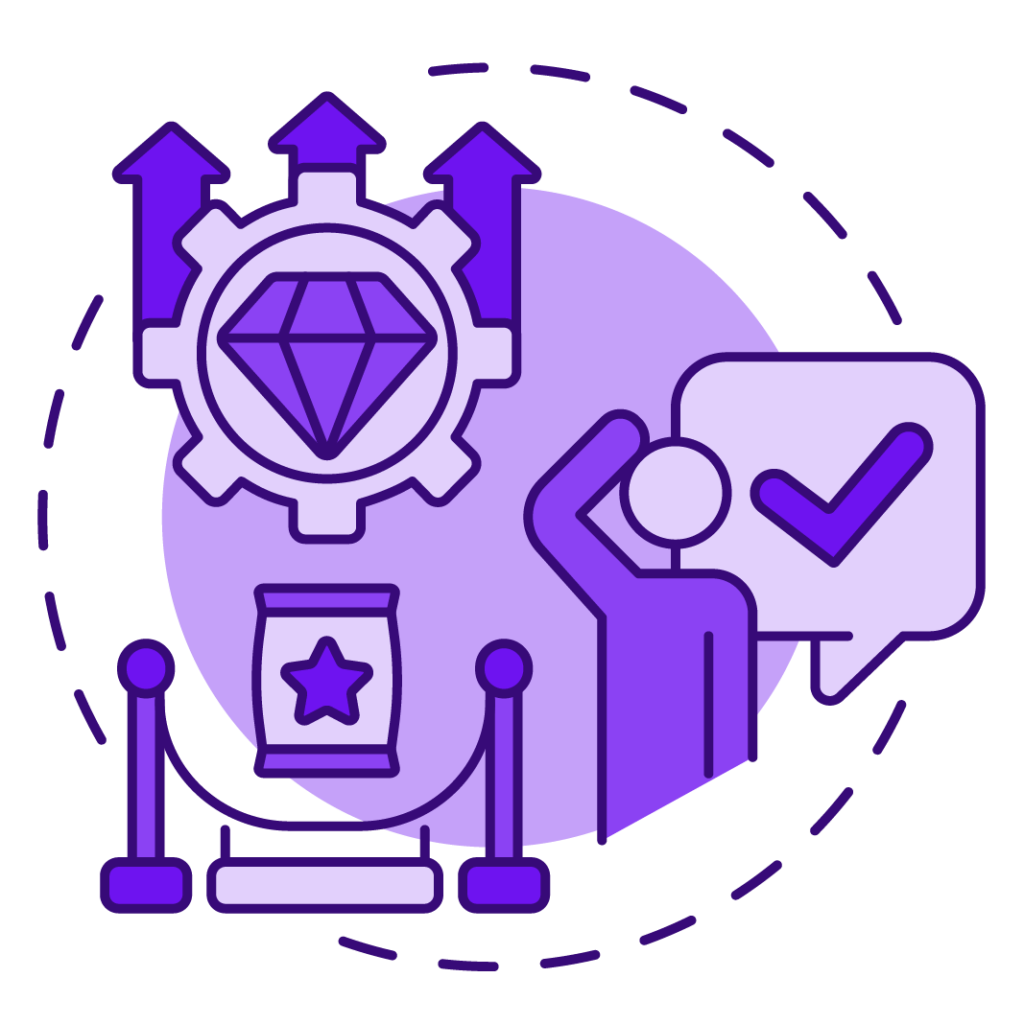
Share This Post
Artificial intelligence isn’t going anywhere. Whether you’re running a fast-growing startup or managing compliance for a global enterprise, AI has already changed the game. But with great power comes… you guessed it—greater responsibility. That’s where ISO 42001 comes in.
Now, if the idea of another ISO certification makes your eyes glaze over, stay with me. This one’s different.
ISO 42001 isn’t just another compliance hoop to jump through. It’s the first international standard dedicated to managing AI systems in a way that’s safe, transparent, and ethically sound. And more importantly, it shows your stakeholders that you’re not just using AI—you’re using it responsibly.
In this guide, I’ll walk you through a practical, no-nonsense roadmap to implementing ISO 42001 in your organization—without drowning in jargon. Let’s break it down, step by step.
Outline
- First, Why Should You Even Care About ISO 42001?
- Step 1: Start with the “Why” – Get Everyone on Board
- Step 2: Check Where You Stand Now (Aka, the Gap Analysis)
- Step 3: Set a Clear Scope
- Step 4: Build Your AI Management System (AIMS)
- Step 5: Tackle Risk Management
- Step 6: Train Your People—Not Just the Techies
- Step 7: Put It All into Motion (And Track It)
- Step 8: Audit Yourself Before Someone Else Does
- Step 9: Get Leadership Involved in Review
- Step 10: Consider Certification (But Only When You’re Ready)
- Final Thoughts: Don’t Just Check the Box—Build a Culture
First, Why Should You Even Care About ISO 42001?
You’re busy. Your team is stretched. Why add this to your plate?
Here’s the deal—companies that don’t take AI governance seriously are already starting to fall behind. Regulations are tightening, customer trust is becoming fragile, and lawsuits over biased or faulty algorithms are making headlines.
ISO 42001 helps you:
- Avoid messy legal battles over AI misuse
- Build trust with clients and regulators
- Strengthen internal controls and documentation
- Stand out in a crowded market
So yes, it’s a compliance standard. But it’s also a long-term business strategy—one that can pay off big time.
Step 1: Start with the “Why” – Get Everyone on Board
Rolling out ISO 42001 isn’t something you do in a vacuum. You’ll need buy-in across your leadership team and key departments. So, before diving into documentation or systems, take a step back and ask:
- Why are we implementing this?
- What risks are we trying to avoid?
- How does this align with our values or brand?
When your team understands that ISO 42001 isn’t about red tape—it’s about building smarter, safer AI—you’ll have a much easier time getting momentum.
At Axipro, we often run awareness sessions that help demystify AI governance. We bring real-world examples, show what’s at stake, and make sure everyone—from your CTO to your marketing lead—gets it.
Step 2: Check Where You Stand Now (Aka, the Gap Analysis)
Before you fix anything, you need to know what’s broken—or at least, what’s missing.
A gap assessment is your reality check. It helps you see how your current processes stack up against ISO 42001 standards.
You’ll want to look at things like:
- How you track and audit AI decisions
- Whether you have ethical guidelines for AI development
- What risks your AI models could introduce (bias, privacy, etc.)
- Who’s accountable for what
Pro tip: Don’t try to reinvent the wheel. We’ve built custom checklists at Axipro that make this step easier and faster.
Step 3: Set a Clear Scope
Here’s where many organizations go wrong—they try to apply ISO 42001 to everything at once.
Don’t do that.
Instead, define a manageable scope. Maybe you only apply it to your customer-facing AI tools. Or perhaps just the R&D team’s models for now.
Figure out:
- Which parts of your business rely heavily on AI
- Which models or systems could have legal or reputational risk
- What markets or countries have stricter AI rules (think EU, California, etc.)
Start small, build confidence, then scale up.
Step 4: Build Your AI Management System (AIMS)
Now comes the fun part—putting structure around your AI practices.
An AI Management System (aka AIMS) is like the playbook your team will use to ensure AI systems are safe, compliant, and transparent.
You’ll want to define:
- Your organization’s AI policy
- Responsibilities and reporting structures
- How you identify, monitor, and control AI-related risks
- Documentation standards for data, models, and outcomes
- What happens if something goes wrong (incident response)
This might sound overwhelming, but here’s the thing: you probably already have some of this in place. ISO 42001 just helps you formalize it.
With Axipro’s templates and frameworks, most teams can get their AIMS foundation in place in just a few weeks.
Step 5: Tackle Risk Management
AI systems are powerful, but they’re not perfect. They make mistakes. Sometimes big ones.
That’s why risk management is a core part of ISO 42001.
Start by creating an AI risk register—a simple log of potential risks linked to each model or system. Ask questions like:
- Could this model reinforce bias?
- What if the data source changes or becomes outdated?
- Is the system explainable to a non-technical user?
- Are we exposing sensitive user information?
From there, assign mitigation strategies. For example, regular audits, human-in-the-loop checks, or data quality gates.
We help clients design AI-specific risk models that plug directly into their existing risk frameworks. No need to start from scratch.
Step 6: Train Your People—Not Just the Techies
This is where many companies drop the ball.
AI governance isn’t just the job of your engineers or data scientists. Your marketing, product, and even customer service teams all need to understand the basics.
So, roll out tailored training programs that explain:
- What ISO 42001 covers
- What each team’s role is in maintaining compliance
- How to spot risks or ethical concerns in day-to-day work
We’ve seen clients cut implementation time in half just by training cross-functional teams early on.
At Axipro, our workshops are built for non-technical folks, too—because governance only works if everyone gets it.
Step 7: Put It All into Motion (And Track It)
You’ve built the framework. Now it’s time to activate it.
This stage involves:
- Applying your AI policy across teams
- Logging your model development and deployment processes
- Documenting training data and results
- Monitoring systems regularly for drift or anomalies
Don’t forget to track how well your AIMS is performing. Set clear KPIs—like model accuracy, incident rates, or time to resolution for flagged risks.
Our Axipro dashboard gives you one central view of your organization’s compliance health in real time.
Step 8: Audit Yourself Before Someone Else Does
ISO 42001 encourages internal audits—and for good reason.
Set a schedule to:
- Review how policies are followed
- Check that roles and responsibilities are still relevant
- Identify any “blind spots” in your AI workflows
- Record any non-conformities and actions taken
This isn’t about playing gotcha—it’s about continuous improvement.
If you’re unsure where to start, Axipro’s audit guides break it down step by step.
Step 9: Get Leadership Involved in Review
Once a year (or more), bring your leadership team together and go through your AIMS performance.
Ask questions like:
- Are our AI systems still aligned with business goals?
- Have we had any close calls or near-misses?
- Is the team keeping up with training?
- Do we need to update our policies based on new laws or technologies?
Leadership buy-in at this stage shows the whole company that governance isn’t a side project—it’s core to your identity.
Step 10: Consider Certification (But Only When You’re Ready)
ISO 42001 certification isn’t mandatory—but it’s a smart move if you want to boost your credibility, especially in regulated industries.
To get certified, you’ll go through:
- A readiness review (are your systems in place?)
- An external audit (usually in two stages)
- Follow-up corrections (if needed)
- A final approval
Axipro walks alongside you throughout this process—from documentation to pre-audit prep.
Final Thoughts: Don’t Just Check the Box—Build a Culture
The truth is, ISO 42001 is more than a standard. It’s a mindset.
When your team embraces ethical, accountable AI, you’re not just protecting yourself—you’re building something that lasts. Something people can trust.
And in a world where AI headlines can shift overnight, trust is everything.
Axipro helps you build that trust. From training and strategy to certification and beyond, we bring clarity, speed, and peace of mind to your AI compliance journey.
Need help getting started with ISO 42001?
Schedule a free strategy session with one of our AI governance experts today. Let’s make your AI smart—and safe.


